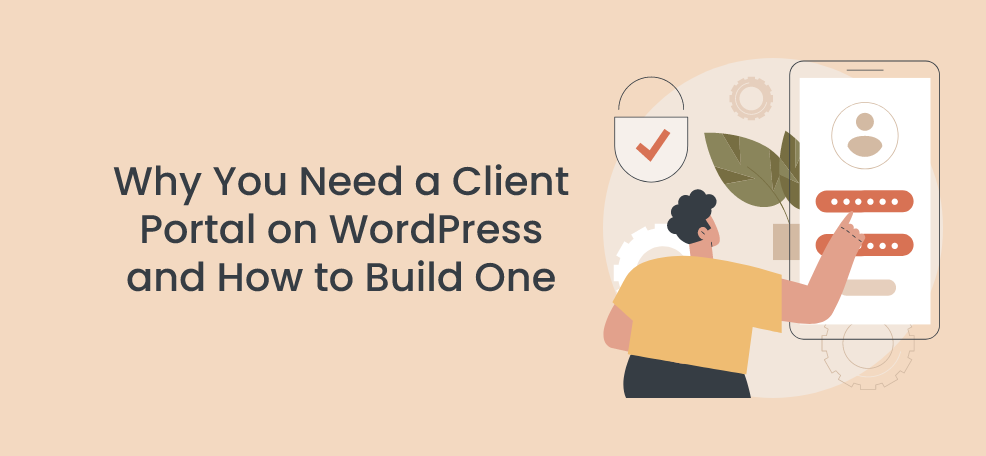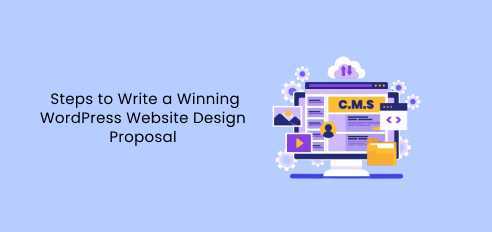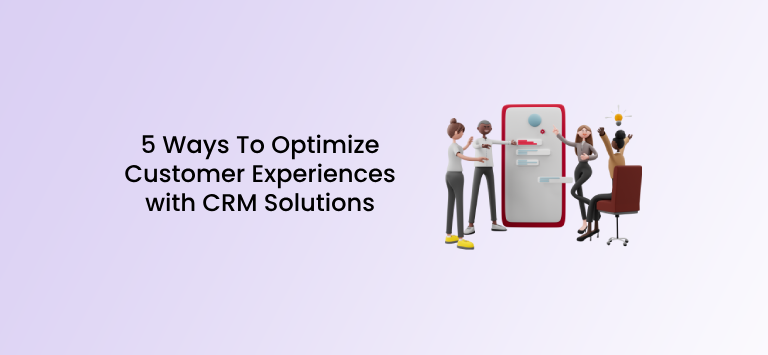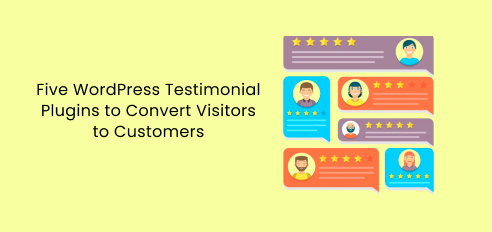A professional WordPress site has a few key identifying features.
First, there’s the layout. Professionals structure their websites neatly and clearly, so visitors can easily navigate the site and find what they need.
There’s also the information. Running a business is much easier when you provide your clients with everything they want to know, and then some.
Lastly – and perhaps most crucially – there’s premium content. You wouldn’t walk into a lawyer’s office and expect to be represented free of charge, and the same principle applies to visiting professional websites. Some content will be publicly accessible, while other content is restricted to paying clients only.
But how do you create that divide between clients and visitors? That’s where client portals come in, and that’s why we’re going to start by looking at what they are.
What is a client portal?
Put simply, a client portal is a virtual “gate” that lets you section off particular parts of your WordPress website so only designated users can access it. Those users are your paying clients.
You can think of client portals as virtual locks that can only be bypassed by paying for the content that’s behind them.
When you use WordPress, you can put as many of those locks in place as you need in order to create an immersive experience for your customers when they visit your website. This helps show your site visitors the value of becoming a paying customer, while also enhancing the experience you offer to your clients.

What does a client portal do?
Client portals can serve a lot of different purposes, depending on how you use them.
The most common one is to separate paid content from free content and allow access accordingly. That means it acts as your VIP access door and your bouncer in a single tool, so you only need to designate which content can be seen by whom and your client portal handles the rest.
Client portals can also be used to sort clients into different payment tiers.
You can also use client portals with different payment models, which often influence what they do. With a one-off payment model, a client portal might give access to a static collection of articles or ebooks, for example. A subscription model could give monthly access to a growing collection of similar items.
In short, regardless of what kind of workflow definition you want to use it with, a client portal can help you keep your clients and content organized.
What should a client portal include?
Essentially, just enough information to show your clients what they’re paying for is the most important component to include. That’s closely followed by as many payment options as you’re able to accept.
Offering more payment options increases your flexibility. It also lets you reach a greater percentage of potential customers. The most popular payment method of 2020 accounted for less than half of all payments made during that year.

This is also not the place to include lengthy explanations on topics like ‘What is wi-fi calling’ – though if Wi-Fi calling is particularly important to your payment tiers, you might link to an explanatory page.
In summary, you’ll want to include the necessary information and a wide array of payment options.
Why do you need a client portal?
Client portals are useful, versatile tools that you need for a few simple reasons.
The clearest reason is to set up paid content and distinguish it from its non-paid counterpart. Client portals can also function as order fulfillment software that shows your clients what they’re getting in exchange for the money they’re paying you.
However, there are more reasons than that to opt for a client portal. Let’s take a look.
Exclusive content releases
When you’ve got clients paying for the content you put on your WordPress page, you can schedule and plan releases of exclusive content that’s only available to particular payment tiers. This gives non-paying viewers an incentive to become members.
Essentially, you can use your client portal to help you do your content marketing right. That’s because creating premium content is a type of content marketing – and content marketing comes with a whole host of benefits, as shown below.
Valuing your own labor
If you don’t have a client portal yet, then any content you’ve put out on your WordPress site is out there for everyone, free of charge.
That’s no way to treat the work you put time and effort into.
It’s a better idea to create a payment portal that lets your page viewers show you they appreciate and enjoy your work by supporting you financially. That lets you value your own labor and ensure you’re not working fruitlessly, earning anything for all the effort you put in.
Drawing in more customers
Have you ever been tempted into buying a product because you tried a free sample, they wanted more? You can use your client portal to achieve the same result for your site visitors.
When prospective clients get a chance to interact with only some of your content, and they enjoy it, they’ll seek out more of it. If that “more” is behind a paywall, they’ll be enticed into making a purchase so they can find more of your content.
In other words, it’s another content marketing strategy. By offering some of your content as a kind of lure, you can draw in new clients who enjoy the work you put out.
Improving your website’s structure
Making your customers search for ways to access your content is a waste of both your and their time. If they need to spend a lot of time trying to figure out where the premium content that they paid for is, they might grow frustrated and stop paying for that content in the future.
To avoid this, it’s a good idea to put your client portal on the front page. You can then link back to it in other places, such as with read-mores and similar hyperlinks promising further content.
A well-placed client portal helps organize your website and make it look more put-together. You can only improve your WordPress page by clearly showing clients where they need to click to subscribe.
How to build a client portal in WordPress
The simplest way to go about this is to use the MemberPress plugin that lets you create member-exclusive content, among other useful features. We’ll outline how to use this tool to build a client portal.
Step 1: If this is your first time using MemberPress, go to “Settings” and enter the license key you were issued within the appropriate field. After that, you’ll be ready to start using the software to create client portals.
Step 2: Click on the “Payments” tab within Settings and enter the information you need to set up the methods your clients can use to pay you. This tab also lets you offer free subscriptions.
Step 3: Once you’ve chosen which payment methods you want to accept, the program will prompt you to enter your account details. This is so the money is forwarded to the appropriate account, so if you have a separate one for client payments, enter those details.
Step 4: Navigate to the MemberPress page on the left-hand menu, then choose Memberships. This tab will show you that you have no memberships set up yet, so we’ll set up the first one now.
Step 5: Click on the “Add New” button next to the word “Memberships” near the top of the screen. This will take you to a page where you can name your memberships and choose how much they’ll cost, as well as what kind of pricing plan you’ll use.
Step 6: Set your access rules to limit parts of your page to paying customers only. Go to “MemberPress”, then “Rules”, and click “Add New”. You can then choose which content you want to restrict, and to which types of members you’re restricting it.
Client portals solved
It’s always important to communicate clearly with your clients. You’ll want to set up your client portal in a straightforward way – and give them details about your virtual business line so they can contact you if anything goes wrong. This is the stage when your chosen communication platform plays a significant role in the success of your clientele.
When you’re creating your client portals, it’s also important to know exactly what separates each payment tier from the next. Your clients should know exactly what they’re getting when they choose which membership they’ll be paying for.
Lastly, it’s well worth it to spend the time to make sure your website is mobile-friendly, including your client portal. That way, you won’t exclude any potential clients.
Author’s Bio
Richard Conn – Senior Director, Demand Generation, 8×8. Richard Conn is the Senior Director for Demand Generation at 8×8, a leading communication platform revolutionizing answers to modern communication questions such as “what is a virtual phone system?” and “what is PBX?”. Richard is an analytical & results-driven digital marketing leader with a track record of achieving major ROI improvements in fast-paced, competitive B2B environments.












